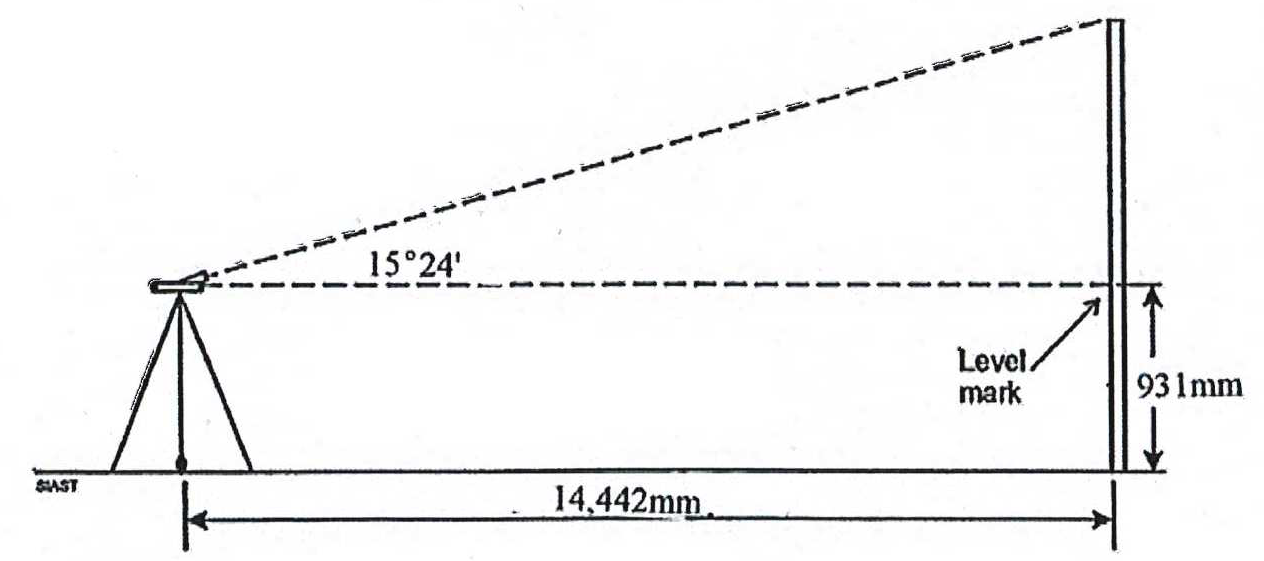Take Rod Readings and Calculate Elevations Review Questions
Review Questions
- Record the readings on the following rods:
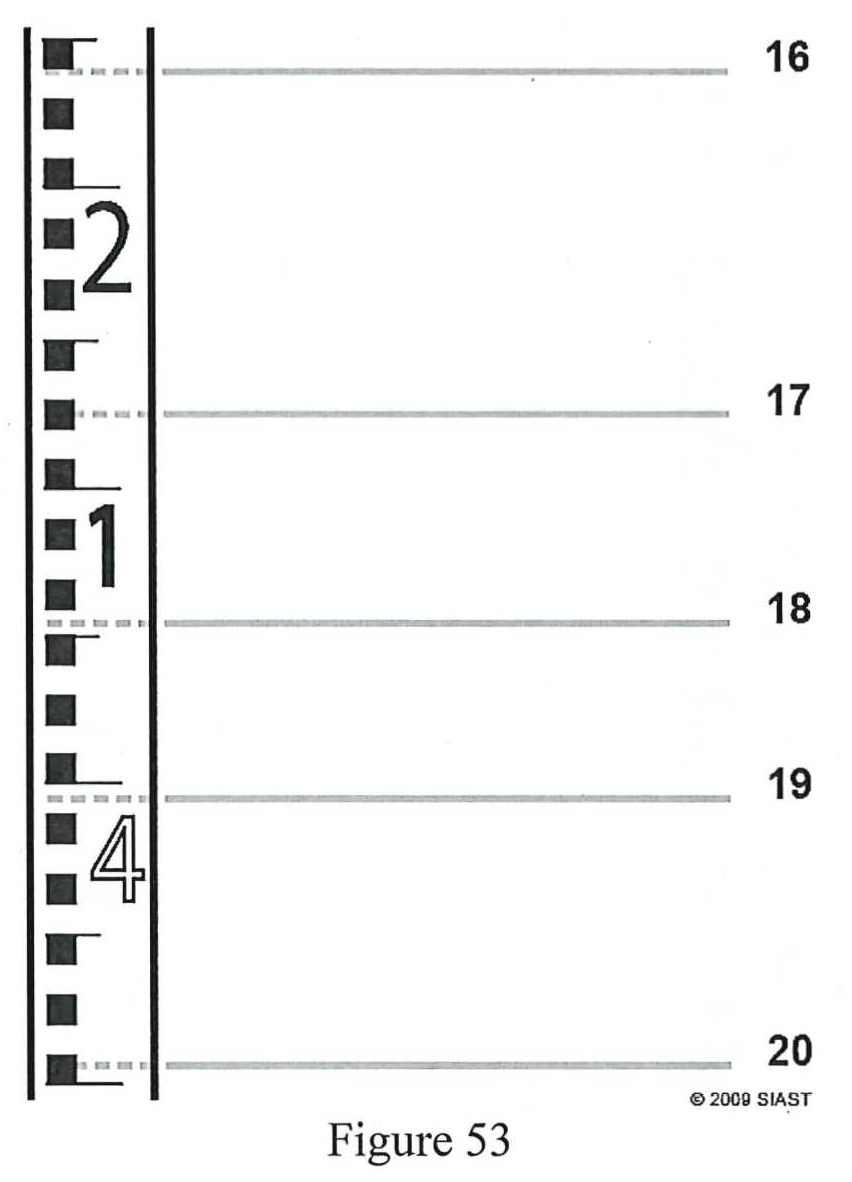

C) D) (Imperial)
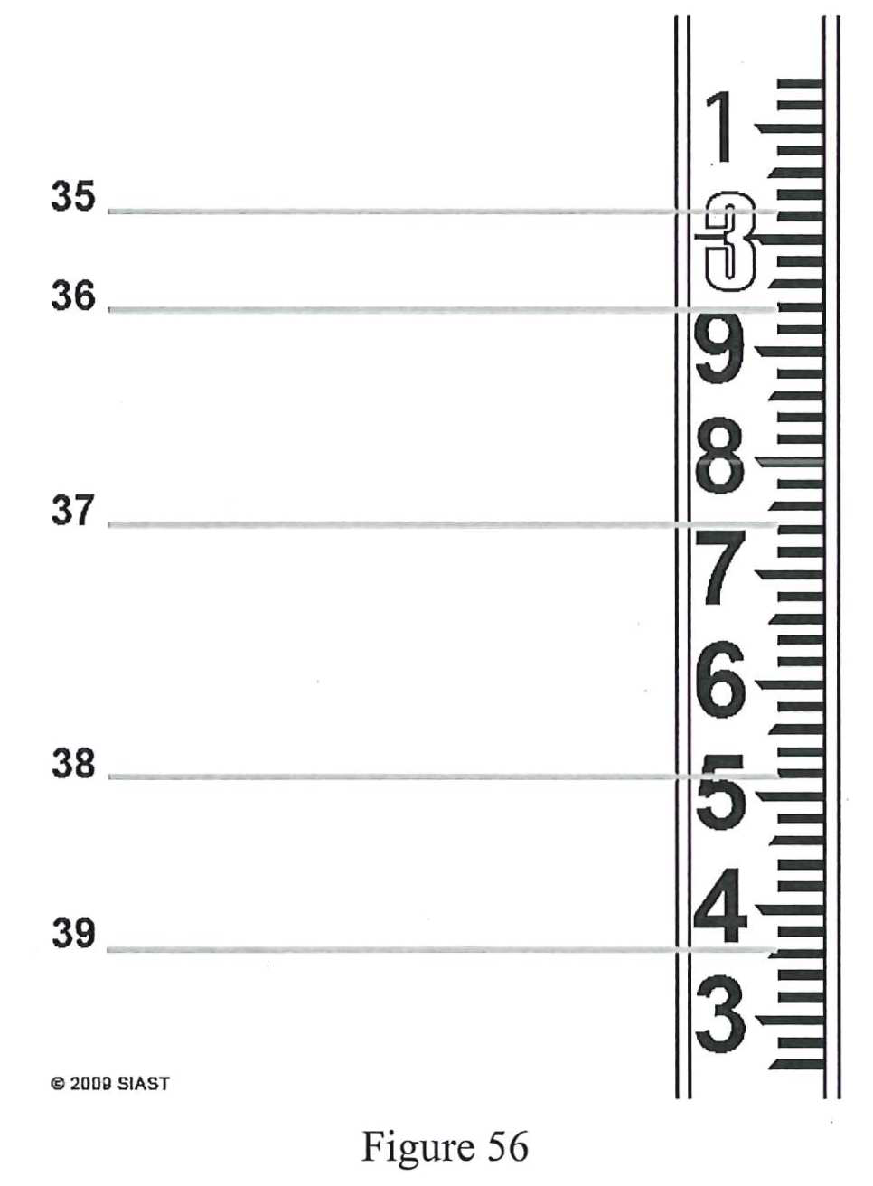
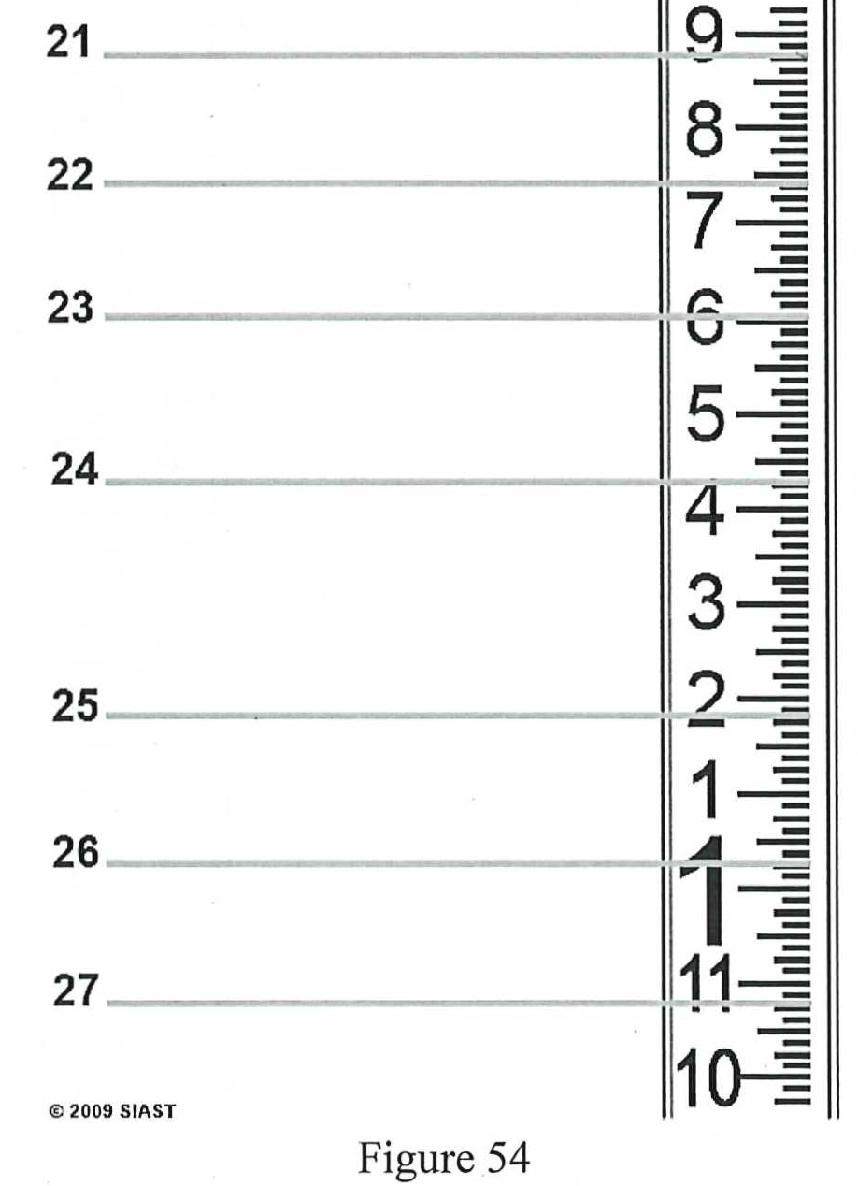
- With the telescope of the builder’s level positioned 1150 mm above the elevation of the bench mark, what figures on the rod should be brought into the line of sight to establish an elevation 2200 mm below the B.M?
- With the builder’s level set up 1270 mm over the B.M. (10 000 mm) and with a reading of 1602 mm obtained when the rod is placed upside down against a ceiling, what is the elevation of the ceiling?
- What is the elevation of the top of a footing if the reading 4394 mm is obtained when the rod is placed on top of the footing and the instrument is set up 356 mm above the B.M (10 000 mm)?
- With the instrument set 1478 mm above a B.M. (10 000 mm), what reading would be placed on the rod to establish a finish elevation of 9400 mm at the bottom of an excavation?
- With the builder’s level positioned 711 mm above the benchmark and a reading of 1097 mm is obtained when the rod is placed on a finish floor, what is the elevation of the finish floor if the B.M. is 10 000 mm?
- When the instrument is set up 1372 mm above a B.M. (10 000 mm), what is the elevation of the top of a column if the inverted rod reading is 3278 mm?
- Using the setup shown below in figure 66, calculate on the field book sheet the elevations of stations 1, 2, and 3.
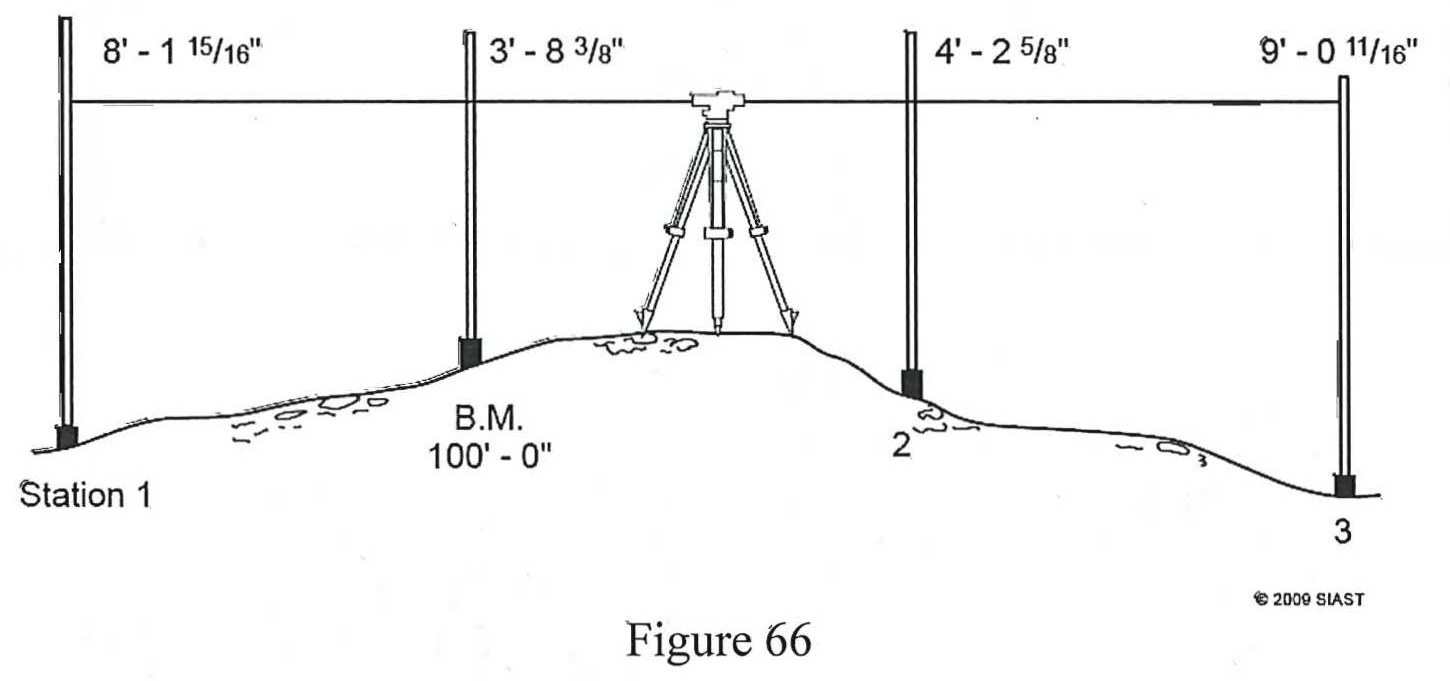
|
Station |
B.S. |
I.H. |
F.S. |
ELEV. |
|
B.M. |
—- |
—- |
—- |
|
|
|
|
|
|
|
|
|
|
|
|
|
|
|
|
|
|
|
|
|
|
|
|
|
- Using the diagram below, find the elevations of stations 1-4:x
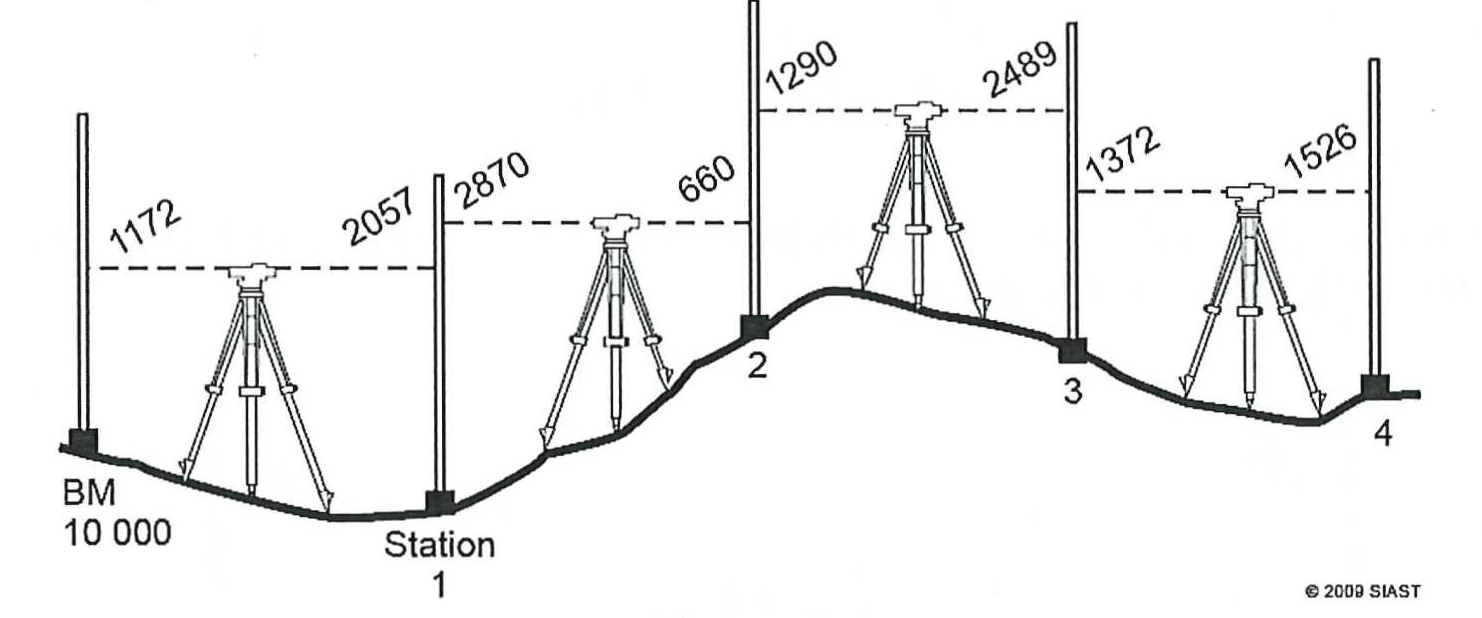
|
Station |
B.S. |
I.H. |
F.S. |
ELEV. |
|
B.M. |
—- |
—- |
—- |
|
|
|
|
|
|
|
|
|
|
|
|
|
|
|
|
|
|
|
|
|
|
|
|
|
Topic 3 – Site Investigation and Building Layout with Hand Tools
Site investigation is a two-stage process consisting of a surface evaluation and a subsurface investigation. The surface elevation will provide information to the builder on site conditions such as how level the area is and if materials like rock or soil need to be added or removed. The subsurface investigation is important to determine if the conditions below the surface will support the structure being built. Soil samples are taken to determine bearing strength and shear capacity of the soil. Knowing the bearing and shear capacity is important. A low bearing capacity may require deeper or larger piles or a different type of foundation altogether. Determining the level of groundwater and level of frost penetration can be determined as part of the subsurface investigation. Compaction testing will determine if the surface supports foundations, sidewalks, roadways and parking lots.
Other important factors in a site investigation are:
1) site access
2) utilities and services
3) site safety and local bylaws.
Building Layout
The dimensions and location of a building are laid out from the property corners marked by the surveyor and referenced on the plot plan. Typically, we establish the front of the building line first. From there the main corners are staked and offsets (wings and additions) are located from the main building. Layout of irregular shaped buildings can also be done by staking out a larger rectangle and locating additional building locations by measuring along the length and width of the rectangle.
One method to ensure the corners are square is to apply the Pythagorean theorem (3-4-5 method). Square or rectangular layouts can also be verified by checking dimensions and the diagonal measurement are the same.
Batter Boards
Building layout often occurs before excavation is done. Batter boards are used to run stringlines so that the layout can be transferred to the bottom of the excavation and re-staked. Batter boards are located well outside the excavation, so they are not disturbed during excavation and allow room for equipment.
For more details, review Instruction Sheet (IS) on Brightspace:
CNST 102/126 (P. 66 – 70):
- IS 3.2 Constructing Batter Boards
- IS 3.3 Setbacks and Restrictions for Buildings
For further information and diagrams, review in texts:
- Principles and Practices of Commercial Construction – Chapter 1
- Carpentry, Chapter 28 – Laying Out Foundation Lines
Review Questions
- What may happen to a house foundation resting on moist fine-grained soil (clay) if freezing takes place under the footings?
- True or False:
- Coarse grained soils under footings are more stable than fine soils.
- Wet, coarse-grained soil will heave more than fine grained soil.
- Soil testing may be done by auger borings, test pits, or checking nearby excavations.
- Dry soils have a greater bearing capacity than wet soils.
- Fine sands expand more than clays when wet.
- Which building line is located first?
- Explain three methods used to square the side building line off the front building line.
- What is the diagonal measurement of a building 32’ x 42’?
- What is the name of the horizontal members of batter boards and what height are they usually fastened to?
- Batter boards should be kept a minimum of _____ outside the building lines.
Topic 4 – Perform Basic Transit Functions
A transit can perform the same layout functions as a builder’s level as the telescope also rotates 360 degrees horizontally. The transit can tilt vertically to shoot vertical angles up to 45 degrees. Like an inch can be broken down into smaller units (fractions), degrees can be subdivided into smaller portions. The units that make up a degree are called minutes. Each degree has 60 minutes. Each minute can be further divided into seconds. Each minute has 60 seconds. Transits use a vernier scale. Readings are taken either clockwise or counter clockwise. Theodolites are digital transits which eliminate having to read a vernier scale.
For example, 26 degrees 30 minutes 20 seconds is expressed as 26° 30’ 20”.
Set up and leveling of a transit is the is the same as a builder’s level.
For further information on types and parts of transits as well as diagrams refer to Instruction Sheets on Brightspace.
CNST 204 (Page 3-40):
- IS 1.2 Types and Parts of a Transit
- IS 3.2 Preparing to Use the Transit
Also, more information in text:
- Principles and Practices of Commercial Construction “Survey Equipment and Transits”
Review Questions
- Name four types of transits used in the construction industry.
- What can be used to increase accuracy when reading the vernier and horizontal scale?
- List the natural sources which may create errors in your readings.
- True or False:
- To test for level, the bubble will not move when the transit is turned horizontally
- Clean the lens of a telescope with an ammonia-based commercial glass cleaner
- An error of one degree will distort your measurement enough to affect accuracy
- What is the purpose of the upper motion screw?
- What is the purpose of the lower motion screw on the transit?
- Describe the circles on a transit.
- Degrees are divided into _____ and _____.
- Record the clockwise and counter-clockwise readings on the following vernier scales (to the nearest minute):
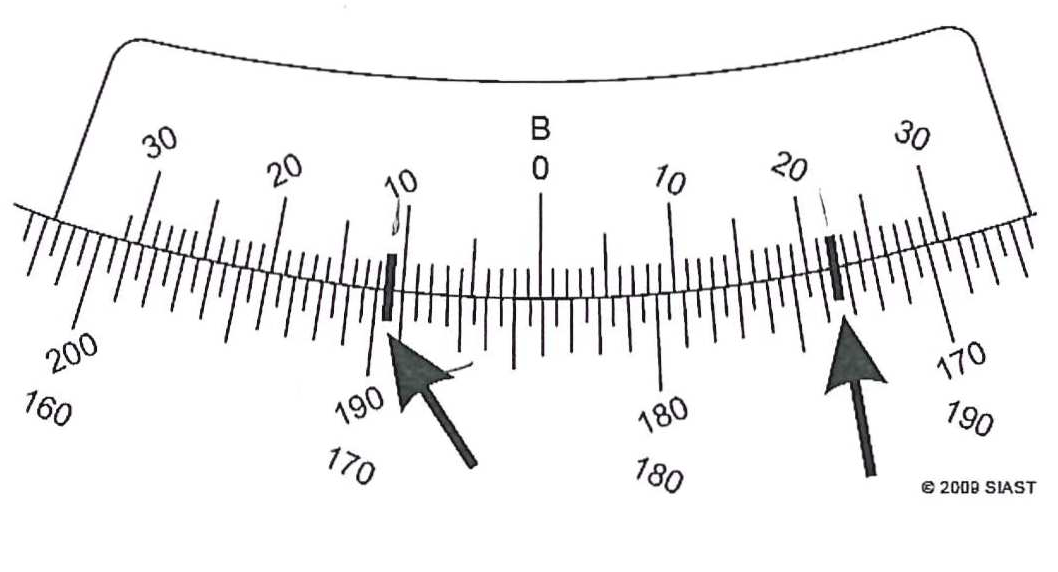
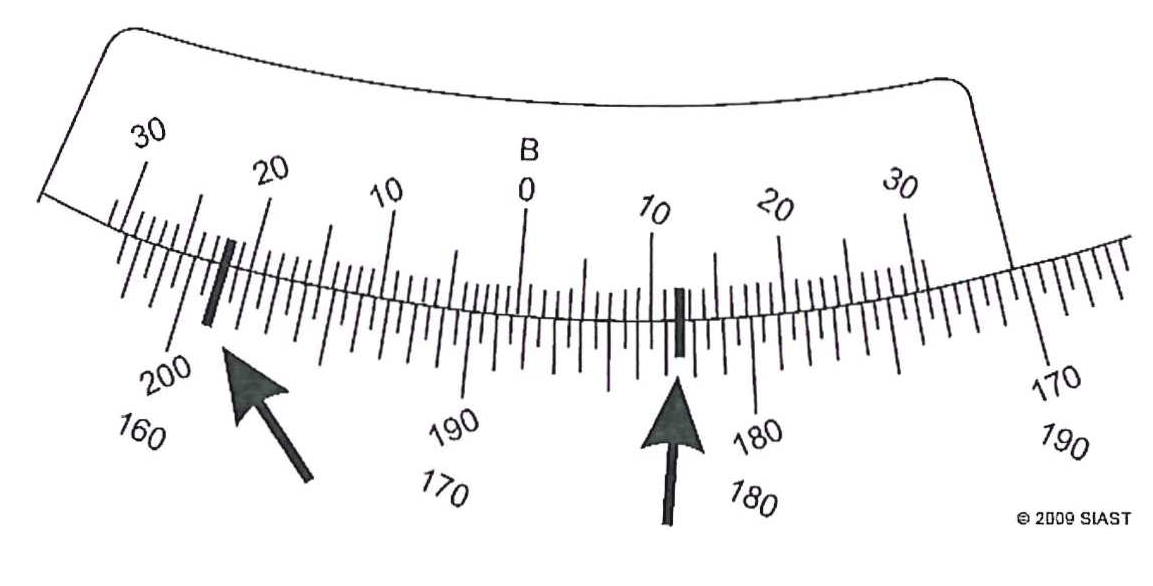
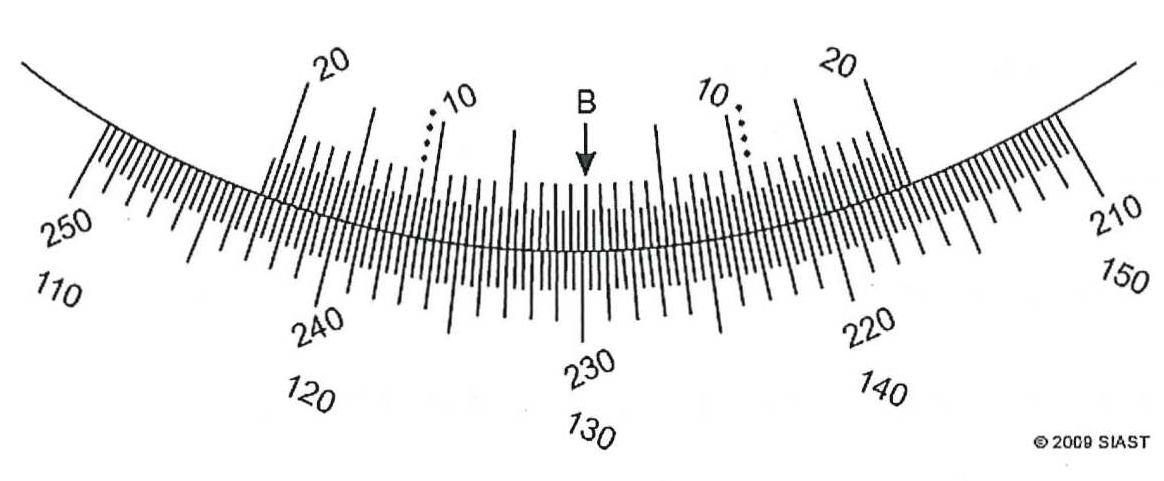
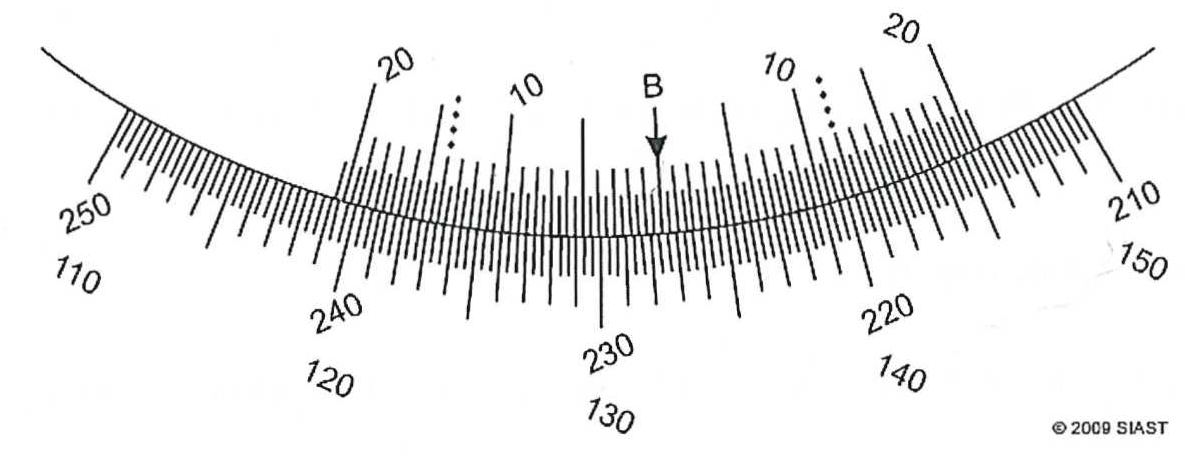
- True or False:
- Each degree contains 30 minutes.
- Each minute contains 60 seconds.
- When storing a transit, all locking screws should be left loose.
- When levelling the transit base levels, both base levels should be used to bring the instrument perfectly level.
- The telescope on a transit may turn 360° vertically.
- An error of 1 degree in layout work will result in an error of 1.745 ft over a distance of 100 feet.
- When doing layout work using a steel tape, a 50 N pull should be maintained on the tape for accurate measurements.
Topic 5– Use a Trigonometry in Building Layout
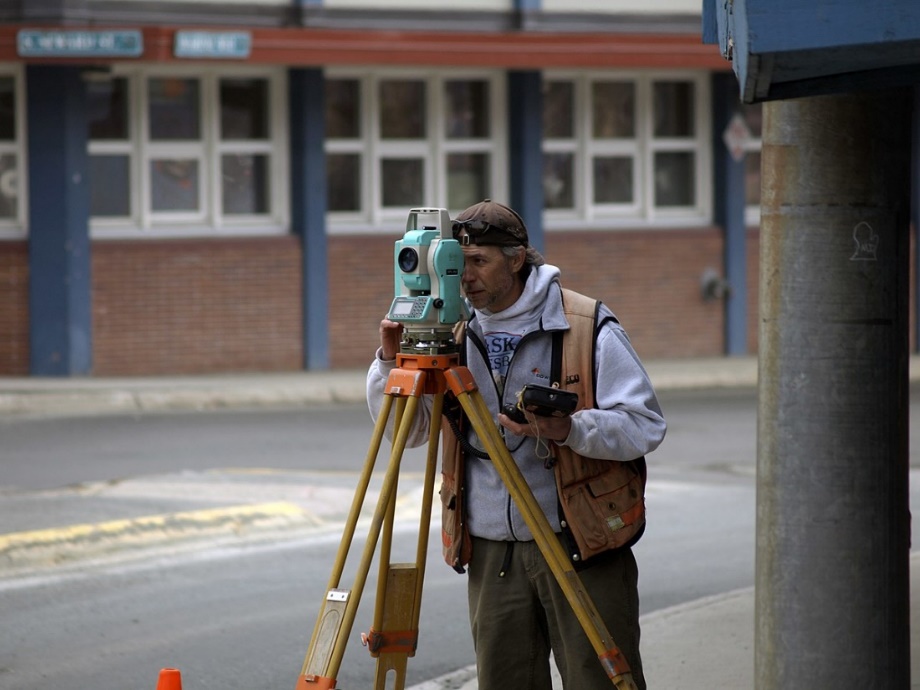
Source: https://commons.wikimedia.org/wiki/File:Surveyor_s18.jpg
Trigonometry can be used to assist in building layout. Many locations can be laid out from a single point with blueprint information, a transit, and a few mathematical equations.
Curves and arcs can also be laid out using trigonometry and a transit or theodolite.

A more common use of a transit is to determine the height of an object.
For more information refer to Instruction Sheet on Brightspace, CNST 204 (p. 61-73):
- IS 2.2 Trigonometric Functions for Building Layout
Review Questions
- What is the formula used to find the tangent of an angle?
- In figure 27, calculate the angle of A:
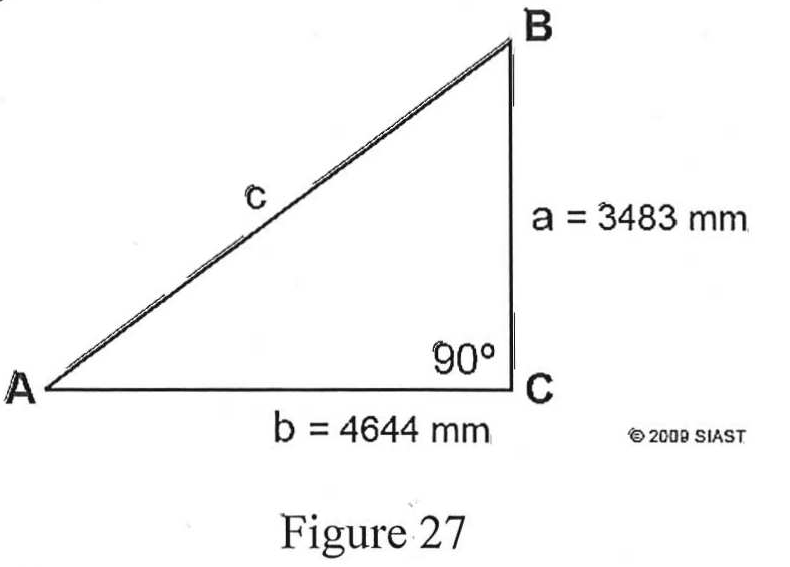
- In figure 28, calculate the length of side “a”.
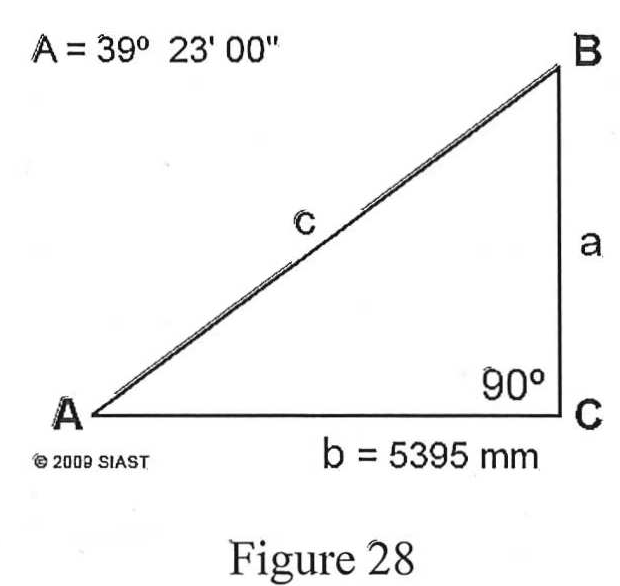
- In figure 29, calculate the length of side “b”
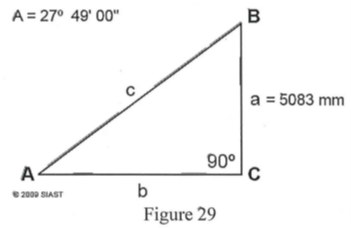
- Calculate the angle to be turned and the distances to be taped to lay out the building with the transit set up over point a only.:
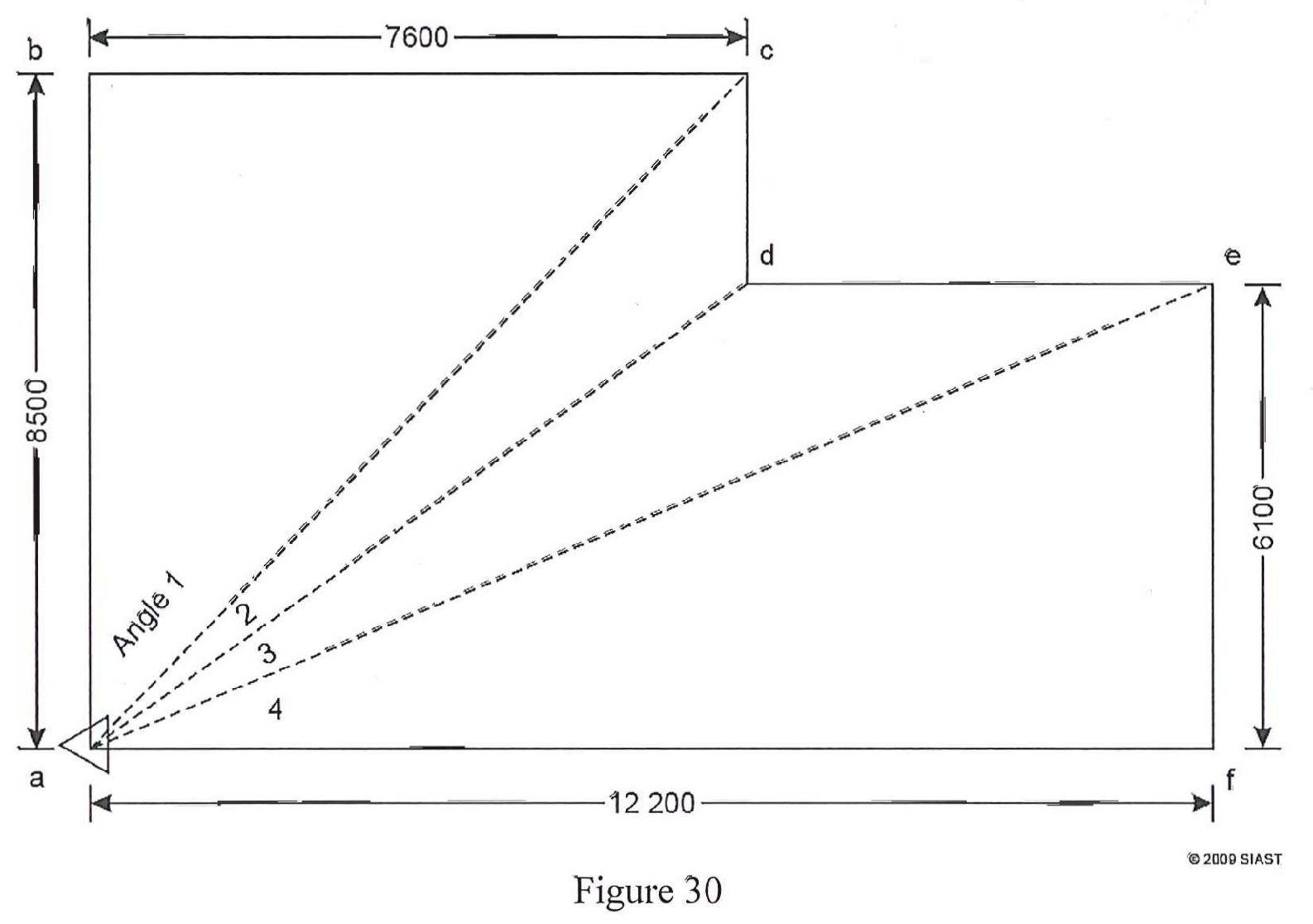
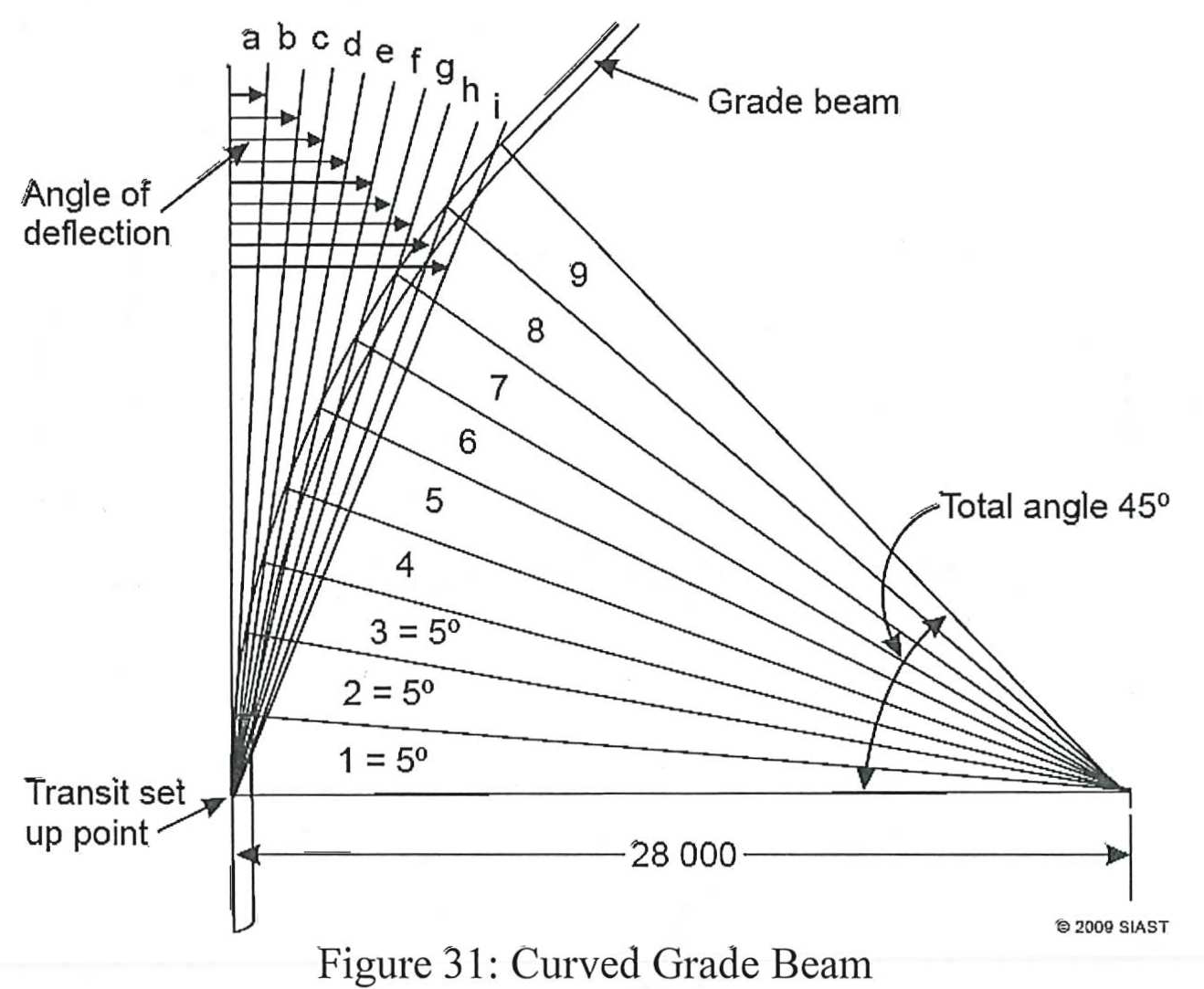 Figure 31 shows a concrete grade beam with a curve in it. The total angle of the curve is 45°. The radius of the curve is 28 000 mm. Divide the curve into 9 parts and calculate the angles of deflection and the lengths of the chords so the curve can be laid out with a transit.
Figure 31 shows a concrete grade beam with a curve in it. The total angle of the curve is 45°. The radius of the curve is 28 000 mm. Divide the curve into 9 parts and calculate the angles of deflection and the lengths of the chords so the curve can be laid out with a transit.
- Calculate the height of the wall in the diagram below:
